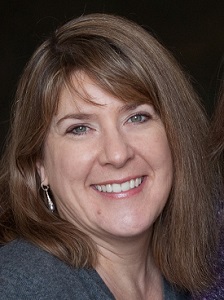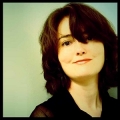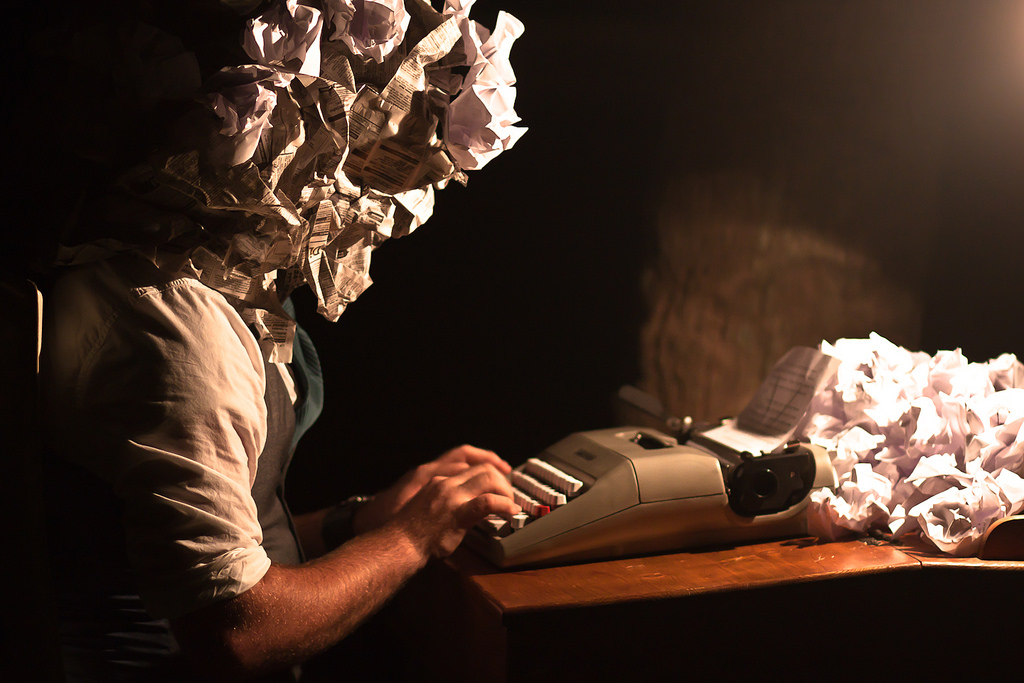You have no items in your cart. Want to get some nice things?
Go shopping
Our Flash of Inspiration this month is “Invasive Species” by Marie Gethins a thrilling tale set in Antarctica that set us thinking about the environment and the delicate balance in nature.
One of the magical things about short stories is their ability to quickly transport the reader to a new place or deep into the mind of a character.
Invasive Species is such a story. It takes us straight to Antarctica – a place that can often seem more imagined than real, a pristine icy wilderness at the outer edge of the world that most of us will never get to experience.
But the wilderness presented to us here is not the one of our imaginations. Something has arrived to disturb the fragile balance of nature.
“It appeared in the clear Antarctic water.”
There is something slightly menacing about this opening line. “It” appeared. Immediately we want to know more about what “it” is even though we can intuit it may not be good.
It turns out to be a moss-like creature which, at first, seems little more than a curiosity, a novelty. Like the research scientists Pedro and Cassandra, we simply want to know more about this white, purring creature, this thing they name “Mossie.” Surely it’s not something to be scared of?
Yet the unease is there, subtly hinted at in the language of the story. The moss appears and sparkles in the fluorescent light of the lab. It purrs, it throbs and hums.
Then, slowly, it drifts, it clings, it fills.
It takes root.
The language shifting through the story slowly, imperceptibly, much like the invasive moss. We aren’t aware of the danger until it is too late.
It’s this careful control of suspense and the slow build-up of the tension which makes “Invasive Species” such a gripping little tale.
But it also leaves us with some intriguing questions about nature and man’s impact upon the environment.
Complex questions which stay in the background but prick our conscience. This is not a preachy story however, it doesn’t attempt to bash the reader over the head with a message. And it’s all the more powerful for it.
I found myself wondering how I would react to the presence of such an invasive species in one of the world’s last remaining wildernesses.
Would I attempt to understand the strange creature the way Cassandra does? To try to communicate with it? To understand it intuitively?
Or would I see it as something to fear? Something to approach “methodically” in a laboratory. Something to control and, ultimately, flee from, the way Pedro does?
In many ways, our reaction depends upon our fundamental idea of what nature is and what it means to us. Something to control and use? Or something to understand and live in harmony with?
Invasive Species does not attempt to answer these questions for us. But it sets us thinking while entertaining us along the way.
Marie Gethins on writing “Invasive Species”

We caught up with Marie Gethins and spoke to her about the inspiration behind “Invasive Species.”
Jen: This story was inspired by a news report on the BBC. Can you tell us a little about the report and how you came to transform a news item on climate change into a short story. Do you usually find inspiration from sources like this?
Marie: The BBC news website had a piece on Fenestrulina rugula invading Antarctica driven by global warming. With thawing icebergs, conditions have been ideal for rampant growth of this white moss, at the expense of other plant life. The lead researcher called it a “weedy little thing,” which struck me as an almost endearing description. It made me think of an episode from the original Star Trek TV series, The Trouble with Tribbles, where these seemingly harmless purring puff balls bred at an alarming rate, causing havoc. So the idea coalesced from there.
I grew up in a very science orientated house and my “day job” is medical writing, so I’m always poking around the science pages or journals. It’s fun to push reality a little left of centre. Of course, fiction often becomes reality over time in science and technology. So while the reader is asked to suspend belief, the fundamental elements are grounded in truth. My idea was to present a “just maybe”.
Jen: One of the things that struck me about this story is the different reactions the two characters have regarding their discovery. After the initial excitement, Pedro becomes noticeably more wary, but Cassandra seems drawn to the moss creature. She names it and listens to it “purring” Did you deliberately set out to have them react differently to one another? I found it chimed well with my own reaction as a reader, having these two viewpoints because I wasn’t sure what to make of “Mossie” should I be intrigued or worried.
Marie: Yes, I see them as very different people. Although both of them are scientists, Cassandra is drawn to Mossie in an emotional way, while Pedro is much more clinical. The excitement of discovery versus caution when faced with the unknown. In this desolate landscape with days growing shorter, Cassandra tries to make sense of this environment in an intuitive way. Pedro focuses on facts and statistical trends, keeping an objective distance. As the story progresses and the creatures continue to respond to her, Pedro rejects her attempt at physical contact. Cassandra’s bond with the creatures increases.
Jen: This story is very dependent on the setting – the invasive moss seems slightly more menacing because it is taking over this seemingly pristine environment. The presence of the tourists also added to the sense that the place is being spoiled somehow – by man, and now, by nature. Was this a message you wanted to put across in the story, that fragility of the earth?
Marie: It’s all about where lines are drawn, isn’t it? Pedro sees the moss invasion as negative; it disrupts his sense of normal. Yet the moss is ancient, existing long before humans. So is the moss’ reappearance what should be normal for this environment? Yet, the thawing icebergs release of the moss is due to human intervention. Obviously I don’t have an answer, but I think it’s a conundrum worth pondering.
On a more basic level, the tourists disrupt the Antarctic environment by treating it like a fun park. They didn’t travel to the area to be respectful observers of natural beauty.
Jen: There’s an undercurrent of menace in the story – not only for the Antarctic, but for the character’s themselves. I got the sense that the moss could be the start of something potentially devastating but that Cassandra, by showing a sympathetic understanding, as opposed to Pedro’s scientific reaction (taking “Mossie” to a lab in Buenos Aires) may be the person who “saves” us. Do you read it this way?
Marie: Indeed, there’s a threat to the existing environment as the moss dominates other plants, but also a potential threat to humans with their seemingly uncontrolled growth. Perhaps the most significant threat is lack of knowledge. How intelligent are the creatures (individually, as a group)? Do they have a motivation beyond instinct? I’ve deliberately left that open-ended. Both characters are seeking this knowledge, but in two distinct ways. As for salvation, I imagine Cassandra and Pedro have very different definitions – as individuals and for the human race.
Jen: You named the woman Cassandra – the figure from Greek mythology who can see the future. Does your Cassandra understand the future? At the end of the story she seems to give herself over to the invasion – she hums along in harmony with the moss creatures. But it’s not sure if she is going to be okay. She knows something, but what?
Marie: Ah, you’ve got me! I’ve always thought that the mythological Cassandra had a pretty raw deal. While Apollo gave her the gift of foresight, he ensured that no one believed her. My other character’s name, Pedro, comes from petra, Latin for stone. In this story I see Cassandra as the visionary and Pedro as the more practical, grounded person. While the moss creatures multiply exponentially, she continues to try to understand them, on some level communicate with them. Pedro opts for self-preservation and strategizing from afar. When the creatures surround the building, Cassandra sees a likely outcome, but is resigned to her fate having developed a stronger bond with the creatures than with Pedro. What exactly is her fate? I leave that to the reader’s imagination.
Jen: Finally, you’ve heard what we like about “Invasive Species” what do you like about it?
Marie: I’ve never been to Antarctica, but desolate landscapes appeal to me. Perhaps because they are never as bleak as your initial impression. The rocky terrain of the Burren here in Ireland or in Iceland and at the other extreme, the Sahara and the Mojave deserts are places where I discovered much more life is happening than I expected. And at the hemisphere extremes auroras add that surreal quality.
I like pondering our relationship with nature as caretaker versus exploiter and science’s role in this equation. So I’m happy I’ve presented these issues, but leave it up to the reader to make their own conclusions.
Poor Cassandra and Pedro! I enjoy spending time with my characters, these two no exception. I appreciate each of their perspectives and approaches to these big questions. On a personal level, it must be hard for Pedro to be stuck on a research station with someone who has romantic feelings he doesn’t reciprocate. It’s sort of like a perpetual bad date. You have to feel for Cassandra too. I mean it’s sad when a collective group of purring moss might seem like the better option.
Why not take a read of “Invasive Species” and let us know what you think?





